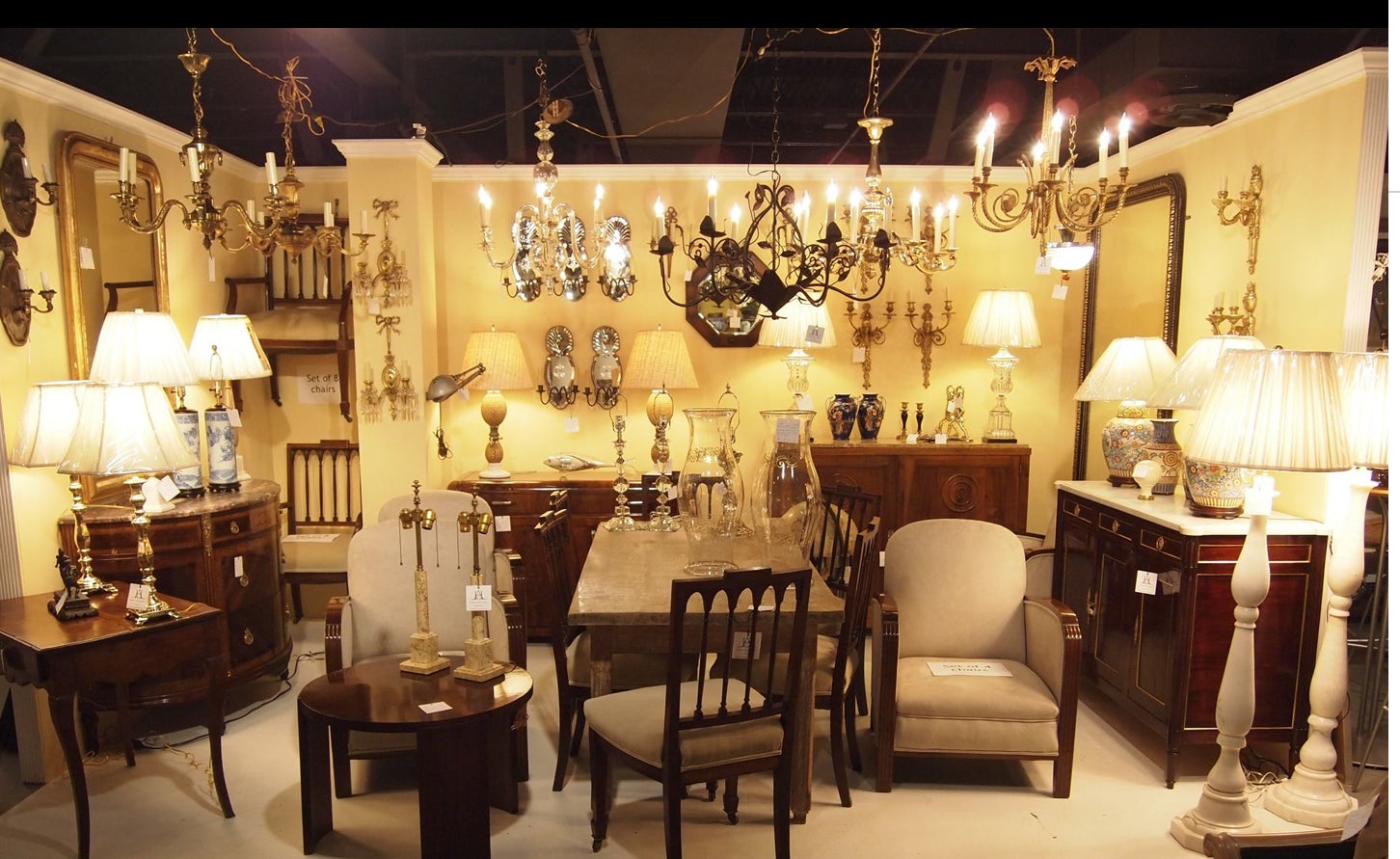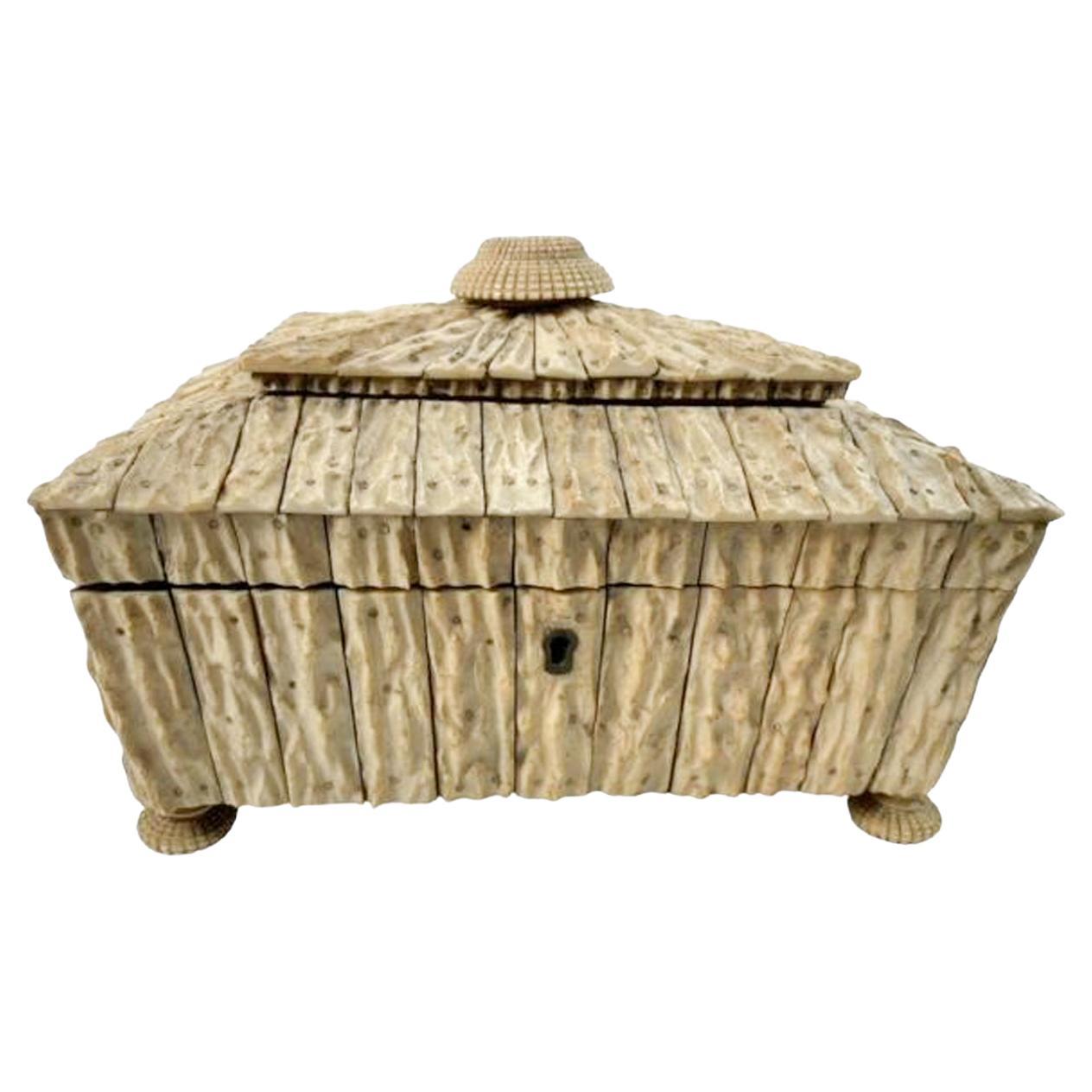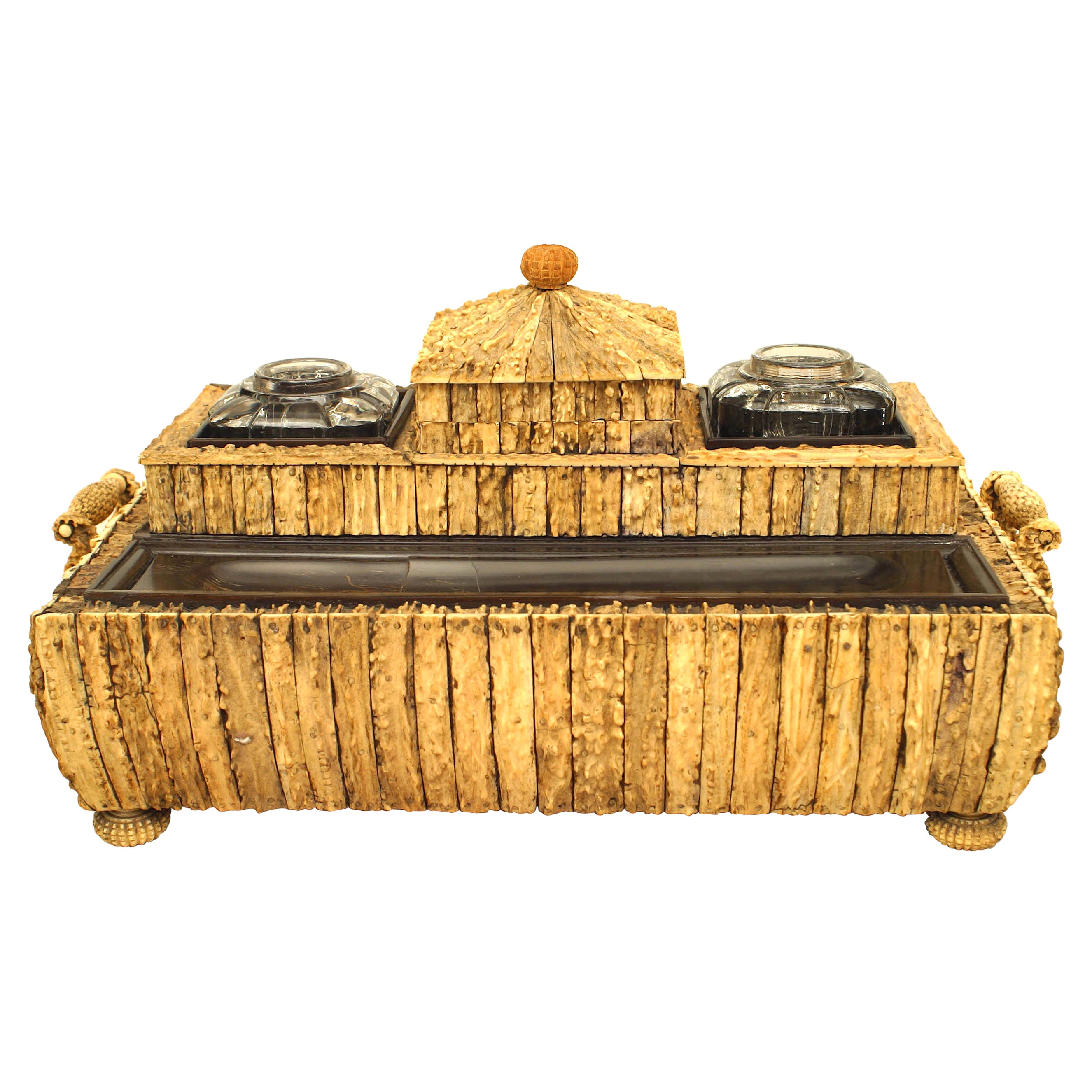Items Similar to Anglo-Indian Ribbed Horn Box with Sandalwood Interior
Want more images or videos?
Request additional images or videos from the seller
1 of 9
Anglo-Indian Ribbed Horn Box with Sandalwood Interior
About the Item
Anglo-Indian glove or trinket box from Vizagapatam of rectangular form with sloped top. Made from sandalwood with vertically ribbed horn veneered sides and starburst ribbed lid with central carved horn finial knob of lotus bud form. The horn of a mellow green color. Lacking feet.
- Dimensions:Height: 4 in (10.16 cm)Width: 9.25 in (23.5 cm)Depth: 4 in (10.16 cm)
- Style:Anglo Raj (Of the Period)
- Materials and Techniques:
- Place of Origin:
- Period:
- Date of Manufacture:1870
- Condition:Wear consistent with age and use. Lacking feet.2.
- Seller Location:Chapel Hill, NC
- Reference Number:

About the Seller
5.0
Vetted Seller
These experienced sellers undergo a comprehensive evaluation by our team of in-house experts.
Established in 1990
1stDibs seller since 2022
35 sales on 1stDibs
Typical response time: <1 hour
- ShippingRetrieving quote...Ships From: Nantucket, MA
- Return PolicyA return for this item may be initiated within 3 days of delivery.
More From This SellerView All
- Anglo-Indian 14"w Stag Horn Veneered Sandalwood Document/Storage BoxLocated in Chapel Hill, NCAnglo-Indian antler veneered work/storage made in Vizagapatam, of large size and having a double tiered sloped top with a large circular finial above vertically veneered sides, all r...Category
Antique Mid-19th Century Indian Anglo Raj Decorative Boxes
MaterialsAntler, Horn, Wood
- Anglo-Indian Stag Horn Veneered Sewing / Work Box From VizagapatamLocated in Chapel Hill, NCAnglo-Indian stag horn veneered sandalwood sewing or work box with a sloped two-tier lid having a carved finial above tapered sides and raised on compressed ball feet. The interior w...Category
Antique Mid-19th Century Indian Anglo Raj Decorative Boxes
MaterialsBone, Antler, Wood
- Anglo-Indian Horn Box with Inlaid Metal Floral Motifs Raised on Turned FeetLocated in Chapel Hill, NCAnglo-Indian box made from panels of horn and decorated with inlaid brass and white metal forming stylized flowers and borders, raised on turned horn feet. Missing four or five dots.Category
Antique Late 19th Century Indian Anglo Raj Decorative Boxes
MaterialsBrass, Steel
- 19th Century Anglo Ceylonese Porcupine Quill Box with Interior Divided TrayLocated in Chapel Hill, NCA large rectangular box made of dark hardwood inlaid with bone dots framing panels of porcupine quill. The exterior of the box is veneered with quill cut and arranged to create a zig...Category
Antique Late 19th Century Sri Lankan Anglo Raj Decorative Boxes
MaterialsBone, Wood
- 19th Century Anglo-Indian Vizagapatam Antler Veneered Sewing / Work BoxLocated in Chapel Hill, NCA fine Vizagapatam made antler veneered sewing / work box having tapered sides and a double tiered four-slope lid with a carved finial and all raised on four turned feet. The interio...Category
Antique Mid-19th Century Indian Anglo-Indian Decorative Boxes
MaterialsAntler, Wood
- Pair of Anglo Indian Silver Metal Clad Armchairs With Rams Heads.Located in Chapel Hill, NCA magnificent and striking pair of Anglo Indian armchairs adorned with intricate silver metal cladding and embellished with captivating Rams Heads motifs. These armchairs seamlessly ...Category
20th Century Indian Anglo Raj Armchairs
MaterialsMetal
You May Also Like
- Anglo Indian Sandalwood and Horn Writing BoxLocated in New York, NYAnglo Indian (19th Century) antler veneered sandalwood writing box of rectangular form with 2 glass inkwells above a drawer (Vizigapatam).Category
Antique 19th Century Anglo-Indian Inkwells
MaterialsGlass, Wood
- 19c Anglo Indian Highly Carved Padouk and Sandalwood Sarcophagus Sewing BoxLocated in Dallas, TXPRESENTING A VERY NICE 19C Anglo Indian Highly Carved Padouk and Sandalwood Sarcophagus Sewing Box. Made in Bombay, India circa 1890-1900. The box case/body is made of sandalwo...Category
Antique Late 19th Century Indian Anglo-Indian Decorative Boxes
MaterialsBone, Padouk, Sandalwood
- Regency Anglo Indian Quill Work Vizagapatam Sandalwood Sewing BoxLocated in New York, NYThis fine Regency period quill work, bone, ivory & sandalwood sewing box with intact interior w sewing implements.Category
Antique Early 19th Century Indian Regency Decorative Boxes
MaterialsBone, Ivory, Sandalwood
- 19th Century Anglo Indian Vizagapatam Carved Sandalwood Box Micro Mosaic InlaysLocated in GBWe are delighted to offer for sale this lovely 19th century Anglo-Indian Vizagapatam carved sandalwood and inlaid box Mid-19th century Anglo-Indian Vizagapatam carved sandalwood box...Category
Antique 19th Century Indian Anglo-Indian Decorative Boxes
MaterialsWood
- 19th Century Anglo-Indian Mughal BoxLocated in North Hollywood, CA19th century Anglo-Indian Mughal wood box, inlaid and hand carved with the Taj Mahal and some flowers all around. Jewelry box, Anglo-Raj box from India in great condition. Nice Mughal Bombay Box...Category
Antique Late 19th Century Indian Anglo Raj Decorative Boxes
MaterialsSandalwood
- Anglo-Indian Vizagapatam Bombay Mughal Style Footed Box With Bone OverlayLocated in North Hollywood, CANice and unusual Indian Mughal style large decorative box, filigree and carved horn. Anglo-Indian footed domed box with exceptional engraved details throughout with filigree and carved veneered bone plaques with arabesque carving. Vizagapatam, late 19th century. History of the Anglo-Indian Boxes Beginning in the early part of the 18th century, Indian artisans made what came to be known as Anglo-Indian boxes for the English residents living in India, who eventually brought or sent them back to England. At the beginning of the 19th century, India began exporting these boxes commercially, although not in any significant numbers until the 1850s. People valued them so highly that manufacturers of tins copied the designs on them in the late 19th and early 20th century. Anglo-Indian boxes fall into four groups: Rosewood or ebony boxes inlaid; sandalwood boxes veneered; sandalwood boxes covered with Sadeli mosaic; and carved boxes often combined with Sadeli mosaic/ The first two categories came from Vizagapatam in East India while the last two came from Bombay in West India. English traders discovered the rich woods and intricate workmanship of Indian artisans, so colonial government officials began to recognize the work of the Indian artists and craftsmen as a source for satisfying the need for furniture and boxes, which would both serve to enhance English households in India. This gave rise to the cabinetmaking workshops in Vizagapatam between Calcutta and Madras. Craftsmen made the first boxes to be decorated with Sadeli mosaic of rosewood or ebony, incised to give further definition to the decoration, directly inlaid into the wood. The shape of the early boxes was either sloping at the front with a flatter section at the back, reminiscent of English writing slopes, or rectangular. Artisans inlaid the borders with stylized floral scrolls and the centers with a single floral motif following a circular or oval symmetrical or asymmetrical pattern. The edging was ornamental and protective, both helped protect the end grain against the weather. Made in Vizagapatam, situated on the south east coast of India, near Madras These exotic boxes...Category
Antique Late 19th Century Indian Anglo Raj Decorative Boxes
MaterialsWood





